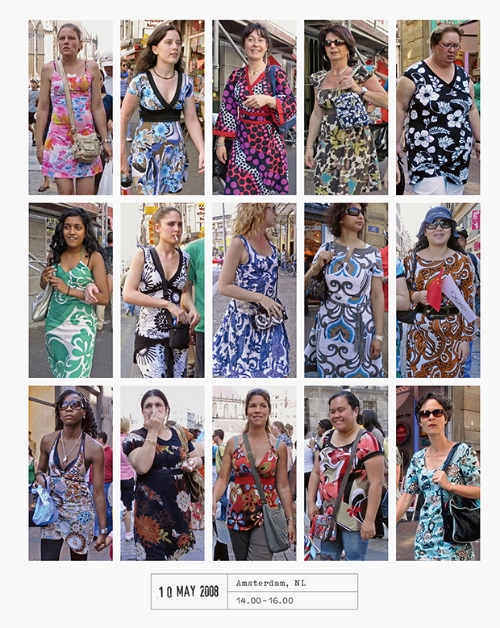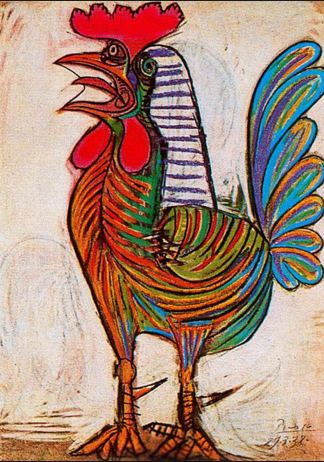A Marriage In Six Breakfasts: Orson Welles and The Art of Compression
Emily: ‘What do you do at a newspaper until the middle of the night?’
Kane: ‘Emily, my dear, your only co-respondent is the Inquirer.’
Emily: ‘Sometimes I think I’d prefer a rival of flesh and blood.’
Citizen Kane
In Orson Welles’ 1941 masterpiece Citizen Kane we see the decline of Charles Foster Kane’s marriage to Emily Norton over six breakfasts. In the first breakfast Charles and Emily are amorous and warm. They sit close to each other and their faces are all smiles and suggestion. With each subsequent breakfast the couple are progressively more formal and cold, more distant in tone and space. Their conversation turns to squabbling about their family and Kane’s work. In the final scene the couple don’t speak at all and bury their heads in their newspapers. She is reading the Chronicle, the rival title to Kane’s Inquirer.
In six breakfasts and just over two minutes Welles conveys everything we need to know about this unhappy relationship. It’s so elegantly succinct. It’s an exercise in economy, distillation, compression.
Charles Kane was a newspaperman, but I imagine he’d have made a fine adman too. And he certainly could teach us a few lessons.
Kane (to his Editor): ‘Mr Carter, here’s a three column headline in the Chronicle. Why hasn’t The Inquirer a three column headline?’
Carter: ‘The news wasn’t big enough.’
Kane: ‘Mr Carter, if the headline is big enough, it makes the news big enough.’
Citizen Kane
In the communication world we all recognise the art of compression. Advertising‘s necessary brevity has made distillation a critical skill. At its best commercial communication can reduce a hugely complex brand to a minute-long film, a single image, a compelling headline. Advertising can be understood as condensed thought.
In my time at BBH I often witnessed John Hegarty encouraging his teams to focus on the essence of the story, the ‘decisive moment’; to edit out unnecessary complexity, executional detail and verbiage. Sometimes he made press ads that looked like posters. Sometimes he would strip away the copy from TV scripts entirely and replace it with music.
Fred and Farid’s 2002 Xbox commercial is perhaps the ultimate example of advertising as condensed thought. It takes us from birth to burial in just one minute. It’s a flight of fantasy that resonates with truth. It finishes with the compelling invitation to ‘Play More.’
Mr Bernstein: ‘Old age. It’s the only disease that you don’t look forward to being cured of.’
Citizen Kane
Compression has many virtues. It forces focus and prioritisation; it enhances understanding; it is economical with people’s time and attention.
As Welles himself states when discussing the theatre, communication that is pared back can also leave room for the audience to fill in the gaps. It is cooperative, suggestive.
‘I want to give the audience a hint of a scene. No more than that. Give them too much and they won't contribute anything themselves. Give them just a suggestion and you get them working with you. That's what gives the theatre meaning: when it becomes a social act.’
Orson Welles
The art of compression is of course also critical in the sphere of strategy. Some strategists hide behind the protective cloak of the intricate and arcane. But the best strategists can reduce, refine, distil. They bring simplicity to the sophisticated; comprehension to the complex.
‘We’re born alone, we live alone, we die alone. Only through our love and friendship can we create the illusion for the moment that we’re not alone.’
Orson Welles
However, the art of compression may be under threat in the world of modern marketing. This era is more long-form and content-driven; more conversational and cross platform; more networked and nuanced.
We should beware: of presuming too much on consumers’ time and attention; of compromising our ability to suggest and co-create; of drowning in our own complexity.
Over recent years it’s become fashionable to predict that advertising may become a redundant form altogether (though ironically the digital economy seems unhealthily dependent on ads). I have always contended that, even if advertising disappeared from the planet, we’d still want to sustain its discipline: the distillation, reduction, compression. We might even produce ads and throw them away, just for the learning we derive from the process…
‘If you want a happy ending, that depends, of course, on where you stop your story.’
Orson Welles
Finally, there’s a more fundamental lesson that brands could learn from Citizen Kane. And it’s not about compression at all. Despite all his professional and material success, Charles Foster Kane was an unhappy man. He was unloved. He didn’t understand that you should not expect people to love you if you can’t love them back.
Jedediah Leland: ‘That’s all he ever wanted out of life…was love. That’s the tragedy of Charles Foster Kane. You see, he just didn’t have any to give.’
Citizen Kane
No. 78




















